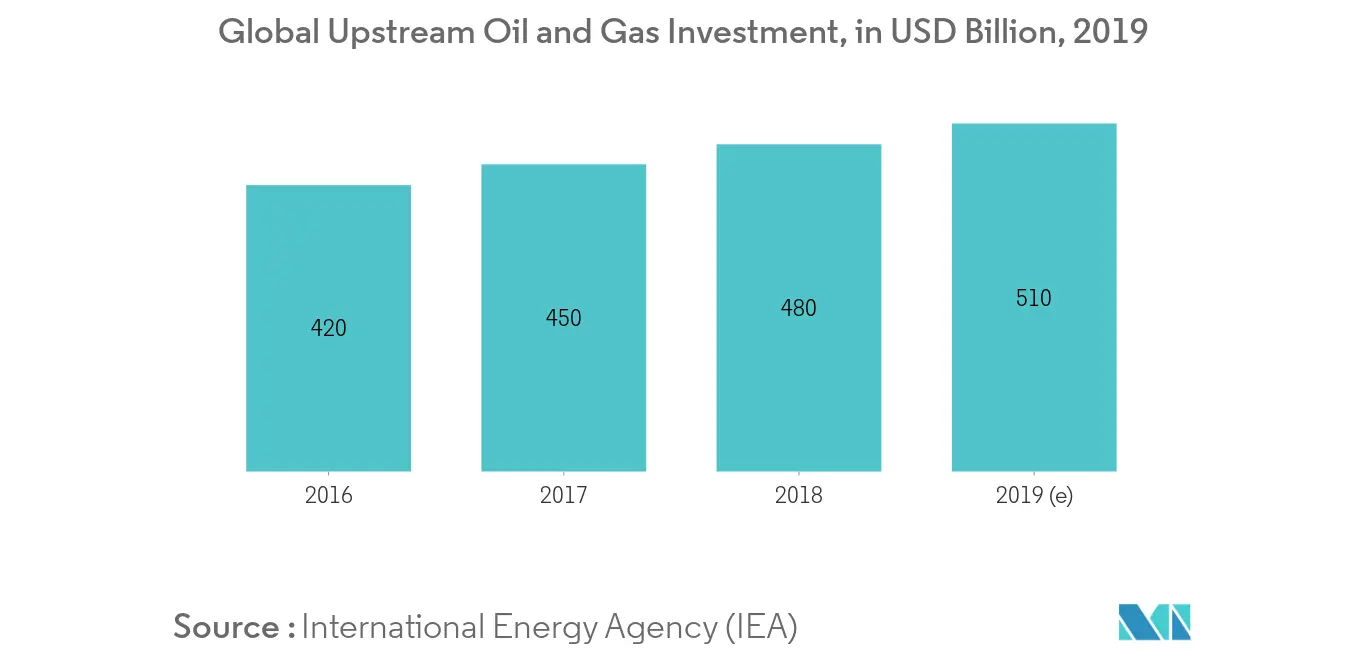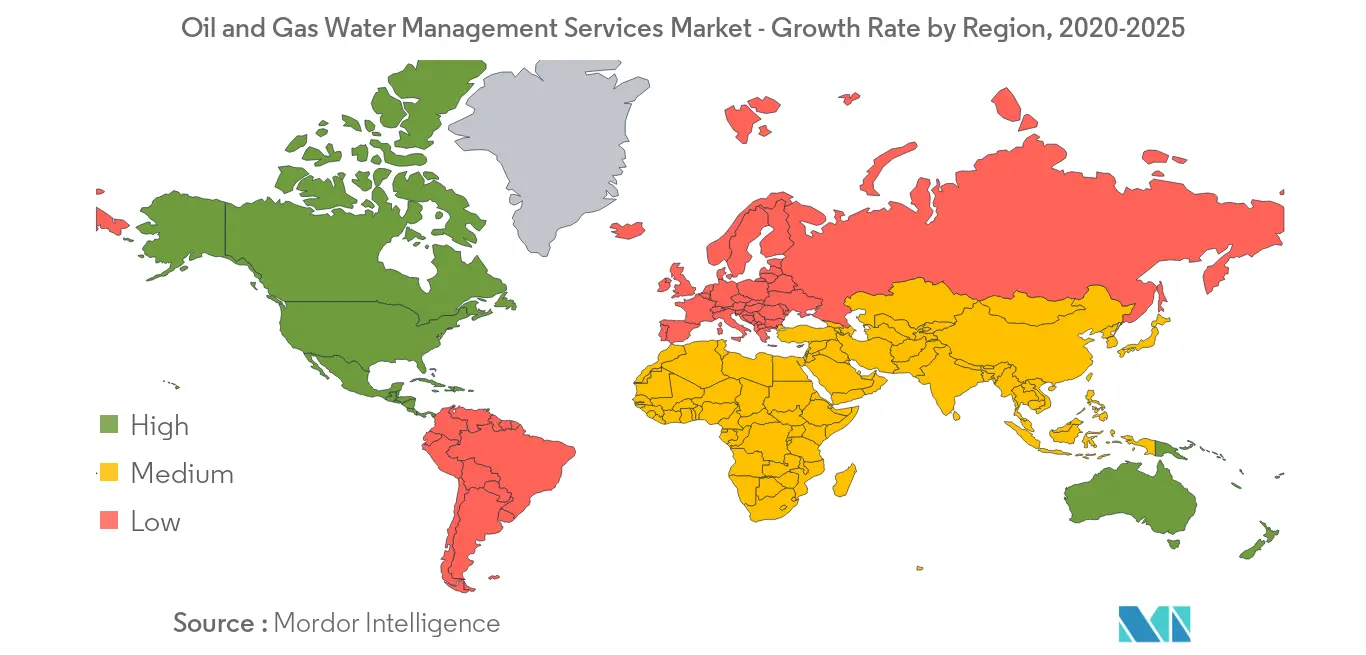Market Trends of Oil and Gas Water Management Services Industry
This section covers the major market trends shaping the Oil & Gas Water Management Services Market according to our research experts:
Upstream Sector to Dominate the Market
- Upstream oil and gas sector accounts for the largest share in the oil and gas water management services. The increased horizontal drilling activity and growing lateral length has translated into the significant demand for water management services in the recent past.
- Though the number of produced wells globally has increased significantly in the last few years, the declining oil and gas production from matured conventional oil and gas fields has resulted in a moderate growth of the volume of produced water.
- Around 100 offshore projects were sanctioned in 2018, up from 60 in 2017 and 40 in 2016. The increasing number of projects is expected to result in increased demand for water management services in the offshore sector.
- The Saudi government has invested on up scaling the production of hydrocarbons and maintain the dominance in the global oil & gas business. Moreover, the country has also invested in the upstream infrastructure. Therefore, the water management services market in upstream and midstream industry in the country is expected to register a substantial growth rate, during the forecast period.
- In the onshore segment the market is led by the United States and in the major offshore demand is expected to come from Brazil, Gulf of Mexico, North Sea, and West Africa.

North America to Dominate the Market
- Over 80% of the global hydraulic fracturing activity takes place in this region. The hydraulic fracturing process involves a large amount of water injection and, hence, water management services are essential in this process to minimize the environmental impact.
- Owing to a large share of oil & gas production and hydraulic fracturing activity, North America is a market leader in the global oil & gas water management services market. This region is expected to experience a significant growth rate during the forecast period, owing to a positive outlook in the United States and Canada.
- The United States is expected to experience a substantial growth in oil and gas activity, owing to increasing level of production from Permian basin of Texas and the Gulf of Mexico. Canada, with stability in oil prices, is expected to experience increase in investments in the oil & gas industry, allowing private players to explore some of its most prominent oil sand reserves.
- Additionally, over the past decade, the lateral lengths of the unconventional wells drilled in the United States, have increased from 2,500 feet to nearly 7,000 feet. Each unconventional well, on average, is being drilled with more hydraulic fracturing stages per lateral length.
- As of 2018, the frac water per well used in lateral drilling is approximately 600,000 billion barrel liters (bbls), which was around 75,000 bbls between 2008-2010. This trend is ongoing due to increasing development activities in the shale reserve and is further expected to drive the market in the coming years.


